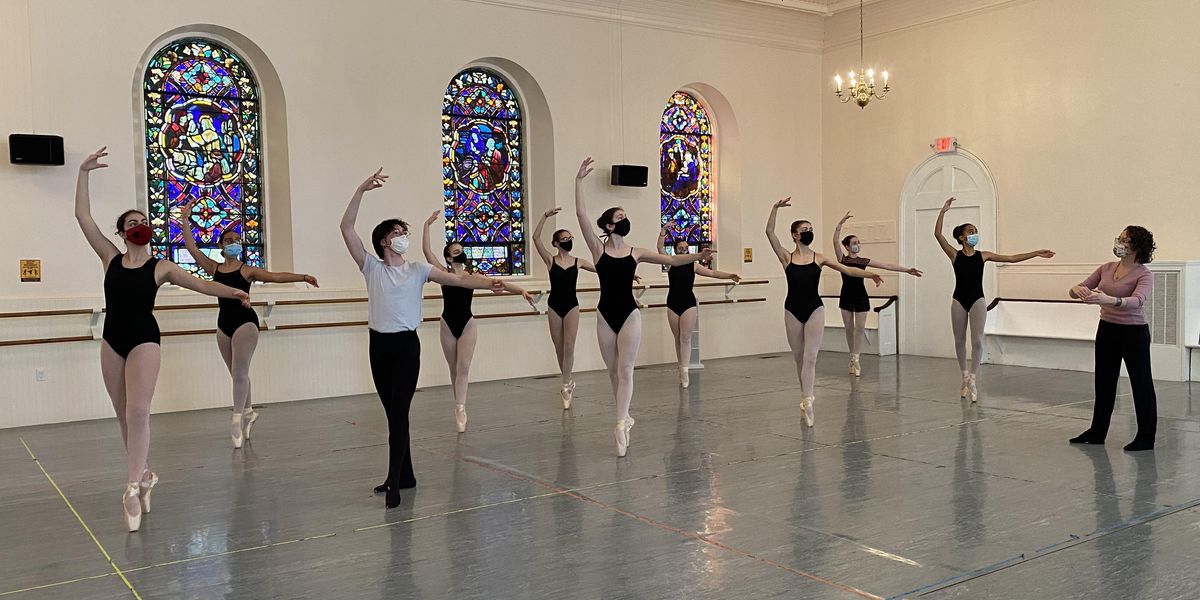This Studio Owner Got COVID-19 Last March—and She's Still Dealing With Lingering Symptoms
Teaching dance during the coronavirus pandemic has been challenging to say the least. Studio owners have found creative ways to continue classes, while prioritizing health and safety and juggling the stresses and financial difficulties of keeping a business afloat.
Aggie Kimple, owner of The Dance & Music Design School in Cornwall, New York, understands the ongoing severity of COVID-19. Along with her husband and children, she had the virus in March 2020. For the most part, her family members have fully recovered, but even today, Kimple is dealing with lingering effects of the illness—something many are calling “long-haul COVID,” though experts are still unsure why some people develop it. Despite it all, she’s remained committed to her students, knowing the balm that dance can be in these uncertain times. Kimple shared her experience with Dance Magazine.
On March 13, schools closed, and our studio immediately went virtual, anticipating that it would just be for two weeks.
My husband, a lawyer, knew he’d be home for two weeks, too, so he decided to give up coffee. The first day, he had a raging migraine. Four or five days later, the headaches were still really horrible. We found out his partner at the law firm had developed COVID and was not doing well.
Then I started to have really bad headaches, and so did our two kids. We finally got our positive test results around April 9. Because we didn’t have fevers, it was difficult to find a site that would test us.

Courtesy Kimple
Since we’d moved our dance classes to Zoom, I taught most of the time when I was sick and asked another teacher to cover my classes for a few days. There were two or three times that I couldn’t physically come up with exercises for the kids, so, instead, they streamed one of the free classes that big companies, like the Hong Kong Ballet, were offering online.
Having COVID was miserable, like a really bad flu for two weeks. But that wasn’t the worst part. It’s the constant relapsing of symptoms. The constant unknown of “Will I be able to get out of bed tomorrow?” and “Will I be in this whole class for the kids?”
When you sprain an ankle or break a leg, there’s usually a steady progress to better health. My COVID recovery hasn’t been that way—I’ve had continuous ups and downs. I’ll have two, maybe four, weeks of what feels like good health. I’ll get to the point where I feel like I could start demonstrating more in class, and then I’ll crash.
For nearly a year, I’ve been experiencing a lengthy list of symptoms: Brain fog, poor sleep, muscle soreness, muscle weakness, shortness of breath, racing heart, feeling lightheaded. The pace of my classes has slowed a bit, because I need a little more time to think about what comes next and what I want them to do, and to give corrections. I don’t know that the kids mind—I’d been the fastest paced teacher at the studio—but, for me, it’s frustrating.

Courtesy Kimple
While I’ve dealt with lingering symptoms, I’ve also revamped my school to make the experience safe for my students and teachers.
We’ve put many safety protocols in place, including improved air filtration and wearing masks throughout class. Our studios are divided into eight-by-eight–foot squares, so we have strict limits on how many dancers can be in a class. In addition to permanent barres, we’ve swapped out our portable barres—which don’t allow for social distancing—with folding chairs. Everything gets wiped down between classes.
We’ve also outfitted every studio with a flat-screen TV and an iPad on a rolling cart, so all of our in-person classes can be live-streamed. (One student moved to Alaska two years ago, and she’s been taking her 11-year-old ballet class twice a week religiously. It’s been nice to have that connection again.) I do think we’ll keep this hybrid setup forever. If a kid has a ton of homework and can’t come in for the entire night, they can Zoom in. It’s not ideal, but it’s better than missing class.
As a studio owner, oh my gosh, this past year has been so upsetting. There have definitely been moments of “I don’t know that I can keep the school open,” because physically, I can’t do the work necessary. But the kids, they need it. It’s their second home, and it wouldn’t be right to close. Even if some days I have to cancel classes or pull in a sub or do something different, there’s still somewhere for them to come in person—or virtually—to be with their friends, to exercise, to feel normal, to feel healthy. I have a responsibility to keep that going for them.
I feel for all the dance teachers. Get the vaccine when you can, and hang in there. It’s an obligation to be there for your students, and that’s a hard thing to balance with your obligation to make sure you can stay healthy.




